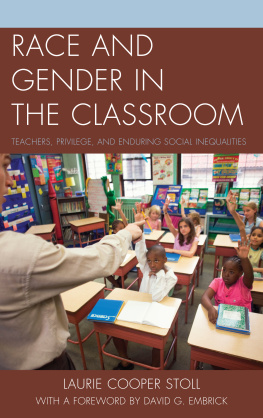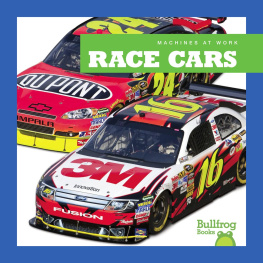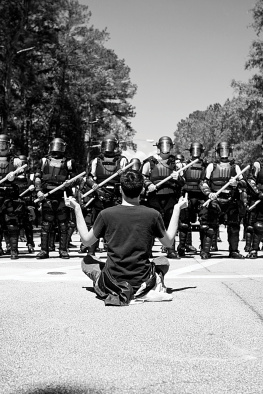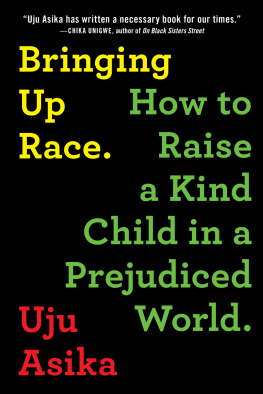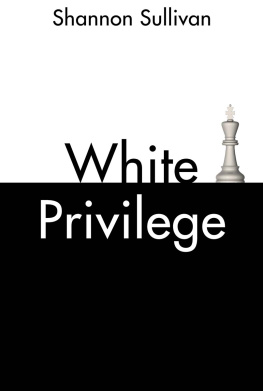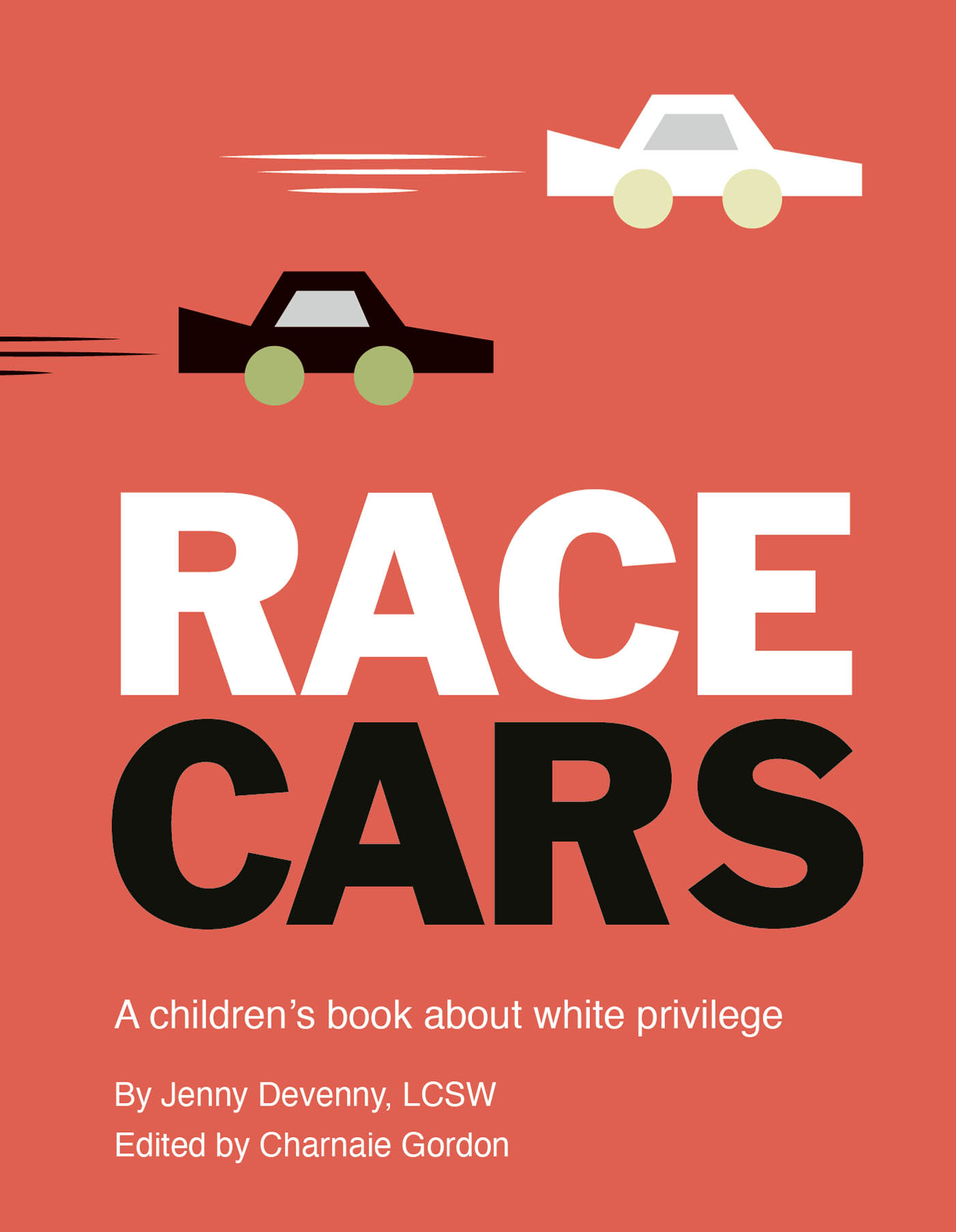Contents
Page List
Guide
Cover
RACE
CARS
By Jenny Devenny, LCSW
Edited by Charnaie Gordon
Contents
AUTHORS NOTE
Race Cars originated through my Masters in Social Work and was an attempt to answer my own questions about how to talk to kids about race, as I navigated working as a white therapist with predominantly Black children and families. Since then, Ive been delighted to see readers of all ages and races using the book as a tool to jump-start discussions. I am thrilled to collaborate with Charnaie Gordon to bring out this thoughtfully updated edition.
My hope in writing Race Cars was to support BIPOC [Black, Indigenous, and People of Color] children in resisting social messages of racial inferiority and to support white children in developing a positive self-concept that enables them to like themselves without needing to feel superior to anyone. My goals are for children to recognize unfairness, develop the emotional empathy to know that bias hurts, and to feel empowered to disrupt racism in their own lives.
Race Cars is purposefully simplistic. It is meant to be read often, and as part of a library of diverse books that foster self-love and celebrate differences. The more you read this book the more you will get out of it, so dont be discouraged if your first conversations dont go as planned. Children want to know more about unfairness, and how to make an unfair situation fair, and will give you plenty of opportunities to try again. Thank you for taking this important first step.
Jenny Devenny, LCSW
EDITORS NOTE
In recent months, discussions about racism, bias, and white privilege have been at the forefront of our everyday lives. Many people avoid these discussions because they fear that conversations about these topics lead to feelings of guilt, anger, discomfort, sadness, and at times disrespect. The current state of our world, however, no longer allows for these tough conversations to be ignored. That is why I decided to take this project on and edit this story in collaboration with author Jenny Devenny. I am so happy with how this story has evolved and I hope YOU as the reader will enjoy it too.
While uncomfortable for some, we are in a position to lead or at least participate in tough conversations with children. It is my hope that readers will use this book to engage in constructive dialogue about privilege, prejudice, racism, and the ways that all of us can work together to shift the conversation from hate and violence toward understanding and respect, to ultimately bring about positive change and unity to our communities.
In addition, I hope white children recognize that having privilege does not require them to feel guilty for their privilege. Use this book as a conversation starter to discuss how privilege looks in our society and which groups have privilege, and which do not.
As with any book, Race Cars is meant to help springboard conversations. It is still up to each person committed to racial justice and equality to do their part. There is still so much more work to be done, but I believe the work is worth our time, effort, and energy, because our childrens lives are at stake. Thank you for reading and supporting this important book.
Charnaie Gordon
TIPS FOR READING RACE CARS WITH KIDS
Stop and think critically: When reading the story, stop at various points to give children a chance to discuss whats happening. Refer back to what you already know about the characters and encourage children to make predictions based on this information. For example: We know that Chase is a black car and that the organizers of the race want a white car to win. What do you think they might do to make sure he doesnt win? Is that fair?
Reach for feelings and activate childrens moral imaginations: Have children consider what the characters in the book might be feeling as they read the story. Can you imagine what Chase must be feeling in this moment? Has anyone else ever felt like that? Encourage them to think about what they would do in that situation. If you noticed something unfair happening, what could you do? Where could you find help?
Invite full participation: When discussing difficult topics such as race, some children may tend to shut down, whereas others may dominate the conversation. Pay attention to non-verbal cues such as body language or facial expressions to get a better sense of how children are reacting to the story, in order to create space for reactions and voices that might go otherwise unnoticed.
Relate it to the wider world:Race Cars is a fictional book, but the book is a reflection of the wider world. Formula 1, the worlds most famous race-car championship, is one of the most expensive sports to participate in, which explains why most Formula 1 drivers are white and come from rich families. In 2007, Lewis Hamilton became the first (and still only) Black driver in Formula 1 history. Overcoming racist treatment throughout his career, he has gone on to become the most successful driver in the sport. Lewis is unique, not only because he is Black but because he also comes from a working class background. Lewis is fighting to become more involved with Formula 1s governing body (similar to the committee in Race Cars) in order to change the rules to be more fair. Lewis is also a supporter of Black Lives Matter and anti-racism within Formula 1.
In the NASCAR Cup Series, the top racing circuit in America, Darrell Bubba Wallace is the only Black driver. In 2013, he became the first African-American in 50 years to win in one of NASCARs top three national touring series. Bubba has played a critical part in NASCARs push for inclusion and equality. In May 2020, after the killing of George Floyd by police officers in Minneapolis, Wallace spoke out about the unfair treatment of Black people by the police, and called on NASCAR to ban the Confederate flag at NASCAR races. The Confederate flag, a symbol of slavery and white supremacy, was officially banned on June 10, 2020.
This is Chase.
Chase is a black race car.
This is Ace.
Ace is a white race car.
They live in a world with lots of other race cars.
Big ones, small ones, short ones, tall ones, old ones, new ones, brown ones, blue ones.
Chase and Ace have been best friends forever.
For as long as they can remember they have been training together for the world-famous, annual race-car race.
Last year, they were finally old enough to enter the race.
For as long as anyone could remember, every year when the big race came around, a white car would win the race. A white car would win fourth place, third place, second place, and first place. Until last year...


